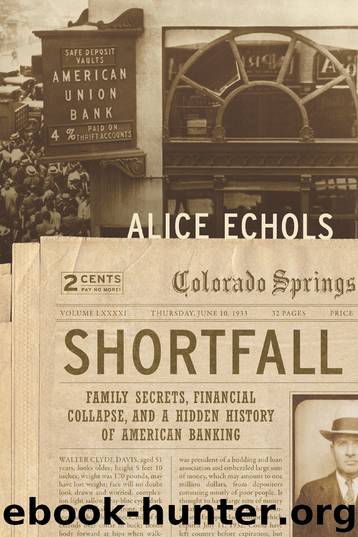Shortfall by Alice Echols

Author:Alice Echols
Language: eng
Format: epub
ISBN: 9781620973042
Publisher: The New Press
Published: 2017-09-14T04:00:00+00:00
The detail in this police circular about Walter Davis is exceedingly fine-grained, as it captures his odd gait—bending his body forward at his hips as he walks—and his habit of moving his lips before talking. (Bureau of Investigation File # 62-27247; author’s archive)
The Depositors’ Committee was comfortable inveighing against government officials, particularly Eli Gross, who presided over the agency mandated with supervising the thrift industry. Members of the committee were willing to use the power of the state to prosecute anyone they believed was a part of the scandal. And they were eager to indict all those who were cleaning up the mess—the receivers, lawyers, accountants, and secretaries—as insiders who were profiting from it.40 Some of the group’s members, such as those who plotted my mother’s kidnapping, gravitated easily to vigilante justice. What they appear to have never contemplated was pushing their legislators to fight for a stiffer regulatory regime for building and loan associations.
The choices made by the Depositors’ Committee should be understood as stemming, at least in part, from government’s treatment of the “little people” who did business with building and loan associations. The thrift industry had successfully fought any effective regulation, leaving association members largely on their own in their dealings with their B&Ls. Some state legislatures and governors did take action during this crisis, although in Colorado it amounted to nothing more than a special committee appointed by the governor. And at the federal level the plight of building and loan members never received the attention or thought given to bank depositors, who mattered more than the working classes who comprised the ranks of B&L members.
One sees the privileging of bank customers over B&L members in the summer of 1932 when a congressional committee held hearings to discuss President Hoover’s Home Loan Bank Bill. The discussion turned to the recently formed Reconstruction Finance Corporation (RFC). One congressman claimed the RFC had failed to meet the expectations of the great masses of people that the RFC would help them. He had in mind B&L members who he said were “thronging the doors of these associations, trying to get the money they must have to buy bread and clothing, and they can not get it.” Another congressman representing Philadelphia pointed out that B&Ls there were in a terrible mess because “they are loaded up to-day with properties that they are forced to take over, owing to the fact that payments cannot be made.” Isn’t it incumbent on the federal government, he asked, to help B&L depositors as well as better-situated bank depositors?
However, for opponents of government assistance, including a congressman from Missouri, it was not “the business of the United States Government to go into partnership with some private institution to help them realize on what perhaps turned out to be a bad investment.” Just as the Colorado Springs lawyer T.C. Turner had argued, the Missourian noted that these people were not depositors, after all, but investors who chose badly by investing in poorly run businesses. When asked
Download
This site does not store any files on its server. We only index and link to content provided by other sites. Please contact the content providers to delete copyright contents if any and email us, we'll remove relevant links or contents immediately.
| Africa | Americas |
| Arctic & Antarctica | Asia |
| Australia & Oceania | Europe |
| Middle East | Russia |
| United States | World |
| Ancient Civilizations | Military |
| Historical Study & Educational Resources |
Cat's cradle by Kurt Vonnegut(15128)
Pimp by Iceberg Slim(14272)
4 3 2 1: A Novel by Paul Auster(12245)
Underground: A Human History of the Worlds Beneath Our Feet by Will Hunt(11992)
The Radium Girls by Kate Moore(11887)
Wiseguy by Nicholas Pileggi(5627)
Perfect Rhythm by Jae(5294)
American History Stories, Volume III (Yesterday's Classics) by Pratt Mara L(5234)
The Fire Next Time by James Baldwin(5217)
Paper Towns by Green John(5057)
Pale Blue Dot by Carl Sagan(4880)
A Higher Loyalty: Truth, Lies, and Leadership by James Comey(4813)
The Mayflower and the Pilgrims' New World by Nathaniel Philbrick(4393)
The Doomsday Machine by Daniel Ellsberg(4387)
Killers of the Flower Moon: The Osage Murders and the Birth of the FBI by David Grann(4363)
The Sympathizer by Viet Thanh Nguyen(4278)
Too Much and Not the Mood by Durga Chew-Bose(4247)
The Borden Murders by Sarah Miller(4211)
Sticky Fingers by Joe Hagan(4078)
